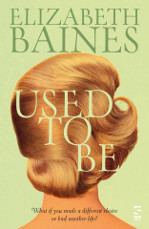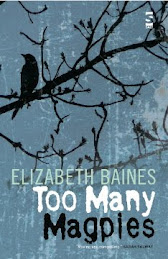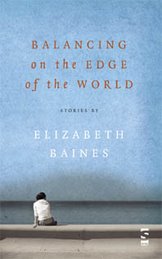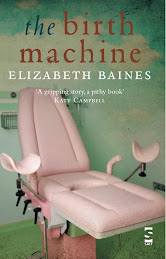It's a long time since we held the discussion of this book, Jenny's choice, and in the meantime my head has been stuffed with my WIP (I've been a long way away, psychologically), so my memory of it is rather hazy.
The book, first published in 1997, winner of a Pullitzer prize, and more recently brought back to attention, is a kind of fable set in New York at the end of the 19th century, when a frenzy of building development was spreading upwards and outwards to create the metropolis we know. It concerns the son of a tobacconist who from humble beginnings as a hotel clerk becomes an entrepreneur, developing first a series of coffee bars and then moving into the business of building hotels, each successive one larger, more luxurious, and finally more fantastical than the last.
We all liked the book, I think, though as far as I remember Hans wasn't so sure about the unusual tension in the book between realism and non-realism. The book begins in the mode of a fairytale, using fairytale idiom and summing up the whole story to follow: 'There once lived a man named Martin Dressler, a shopkeeper's son, who rose from modest beginnings to a height of dreamlike good fortune.' There's also a surreal episode near the beginning in which, before he becomes a clerk, Martin is taken to the top floor of the hotel and witnesses strange scenes amongst a troupe of actors staying there. However, the novel then quickly moves into a realist mode, with a measured, slightly old-fashioned prose very suited to the era portrayed, and a plethora of fascinating (and clearly deeply researched) historical details (which everyone loved). However, embedded within this realism is the motor of the novel: Martin Dressler's own psychic development from inspired but realist business sense to ambition, dreams, and finally fantasies that overreach themselves. As a result the novel ends in surreality, with Martin's final hotel a place that could not possibly exist in reality, with whole replicated worlds encompassed on its endless floors, including features such as real boating lakes.
Personally, I like this narrative tension a lot as a statement of the disastrous lack of realism at the heart of so many real-life capitalist projects, and indeed of our capitalist mentality and society, and Trevor in particular wholeheartedly agreed. There was some discussion as to how far in any case the ending of the book was a fantasy, those who had been to LA saying that projects there equal Martin's in their reliance on fantasy if not in impossible physicality.
Everyone was very taken with the ending, in which, recalling the early surreal scene involving actors, once Martin's final dream hotel is failing he employs actors to act as guests. In order to do so, they (for a time) become real-life inhabitants, the fantasy thus melding into reality. Finally, Martin walks by the river 'woken from his dream of stone', but unbowed, because it wasn't the particular dream that was important, but the dream impulse itself. In other words, realism can't win: the capitalist fantasy won't die.
Introducing the book, Jenny found central Martin's relationship with the two sisters he meets in a hotel where he lives before starting his own: he marries the dreamy but cool and ungiving Caroline, but takes into his confidence and business the lively and practical and less good-looking Emmeline. Jenny saw this as a depiction of the cultural (sexist) paradox in which women are required to fulfil incompatible male fantasies and be both beautifully fey and yet practical. I saw the two women (and his relations with them) rather as personifications of Martin's own psychic paradox - his initial practicality, and the dreaminess that overtakes it and leads to his downfall.
There was comment on the fact that there is a lot of repetition - especially in the depiction of these two women and their chaperoning mother. One early description of Caroline - '...her pale hair pulled tightly back, so that it seemed to pull painfully against the skin of her temples' - is repeated several times. This is another rhetorical and rhythmic fairytale technique, and Ann pointed to the similarity with Homer's repetition of 'the wine-dark sea', noting also that it was a kind of labelling or signalling (of themes, tropes etc). A labelling technique seems indeed apt for the Victorian setting. However the repetitions here weren't exactly snappy, yet were repeated verbatim and so didn't work for several members of our group. Some people indeed found the book on the whole very wordy, though I hadn't found it unaptly so myself, and they did concede that the prose style was very suited to the era of the story.
Finally, Jenny and Clare both expressed appreciation of the fact that, in spite of this, the novel is composed of (more modernist) short sections, which made it easier to read in the short bursts occasioned by modern life. All in all, we thought it an excellent and engaging allegory of the capitalist urge, and thus indeed of present-day society.
Our archive discussions can be found here and a list of the books we have discussed, with links to the discussions, here
Subscribe to:
Post Comments (Atom)











No comments:
Post a Comment